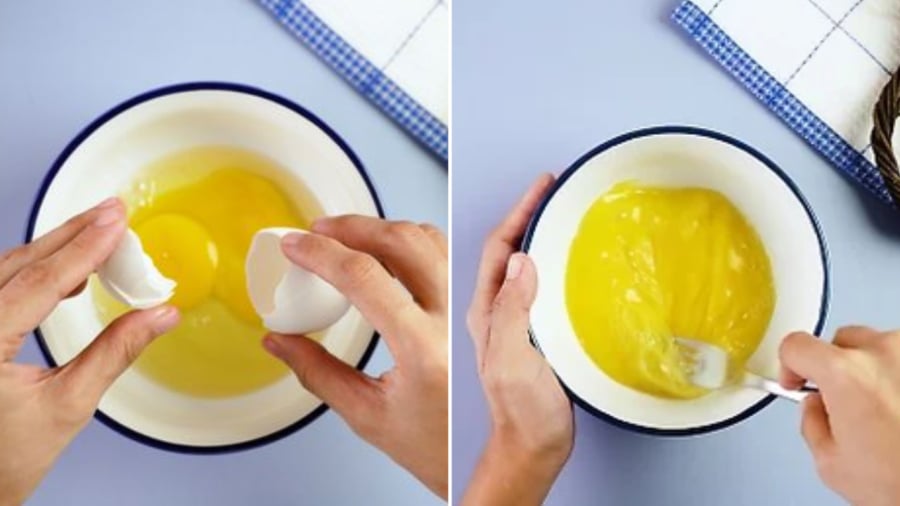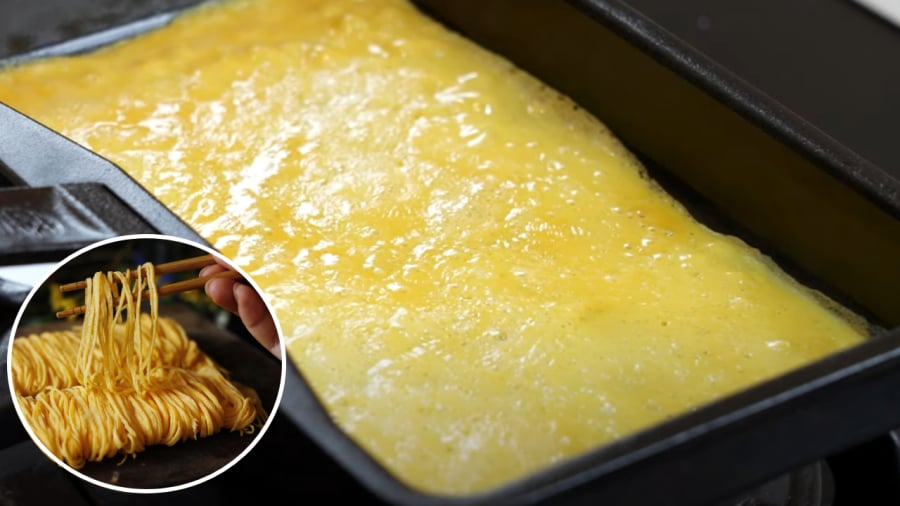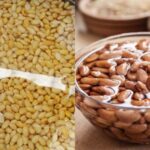Preparing the Eggs
Start by selecting fresh chicken eggs. Look for ones with naturally shiny shells and a good weight to them. When whisking the eggs, you can add a little water to make them softer. If you want to get rid of any fishy smell, add some alcohol.
Crack the eggs into a bowl and season with fish sauce, salt, and seasoning powder to taste. Add half a teaspoon of clear alcohol, 1.5 teaspoons of room-temperature water, and gently stir in a circular motion. Be careful not to overbeat the eggs, as this will cause them to become frothy and affect the texture when fried.

Avoid overbeating the eggs to achieve a thin and delicate crepe.
For a more vibrant color, opt for free-range chicken eggs. Some people like to mix chicken and duck eggs for added elasticity and a richer yellow color.
Strain the egg mixture through a fine-mesh sieve to ensure a smoother texture. Now you’re ready to heat up your pan and start frying.
Frying the Thin Egg Crepe
To achieve the thinnest and most delicate egg crepe, a non-stick pan is your best friend. Make sure your pan is clean and dry before placing it on the stove. Heat it over medium heat to ensure the pan warms up gradually. Avoid high heat, as it will cause the egg crepe to become puffy and dry.
For this dish, you only need a minimal amount of oil or fat. Use a silicone brush or a clean paper towel to apply a thin layer of oil evenly across the pan’s surface.
Hold your hand about 20 cm above the pan to test the temperature. You’re looking for a gentle warmth, so adjust the heat accordingly. Once you reach the desired temperature, turn the heat down to the lowest setting.
Use a small ladle to pour just enough egg mixture to coat the entire pan with a thin layer. Return any excess egg to the bowl. Keep the heat low to allow the egg to cook slowly, resulting in a smooth and even crepe. As the egg sets, you’ll notice the edges starting to lift. Gently shake the pan and use a silicone spatula to loosen the edges. Flip the egg crepe and cook it for a little longer before transferring it to a plate.

Cook the egg crepe over low heat for the best results.
Repeat this process until you’ve used up all your prepared egg mixture. These thin egg crepes will have a beautiful elasticity, a glossy finish, and a silky smooth texture. Depending on your preference, you can use these crepes in various dishes.
Typically, these thin egg crepes are cut into thin strips and used in dishes like Hanoi’s famous bún thang or spring rolls.



































